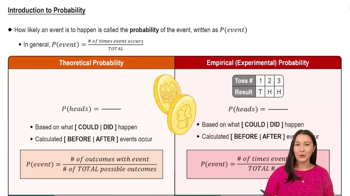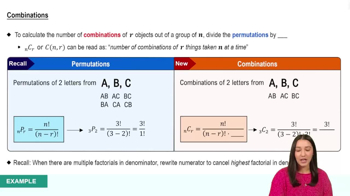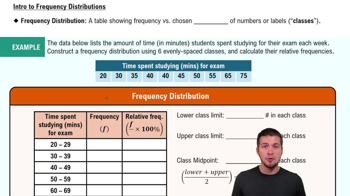Here are the essential concepts you must grasp in order to answer the question correctly.
Probability
Probability is a measure of the likelihood that a particular event will occur, expressed as a number between 0 and 1. In this context, it involves calculating the chance of selecting a specific number of third-shift workers from a total group of workers. Understanding how to compute probabilities is essential for solving problems related to random selection.
Recommended video:
Introduction to Probability
Combinations
Combinations refer to the selection of items from a larger set where the order does not matter. In this scenario, we need to determine how many ways we can choose four third-shift workers from the total number of third-shift workers available. The formula for combinations is crucial for calculating the total possible selections.
Recommended video:
Total Workers and Distribution
Understanding the total number of workers and their distribution across shifts is vital for calculating probabilities. In this case, there are 54 workers in total (24 first shift, 17 second shift, and 13 third shift). This distribution helps in determining the total number of ways to select workers and the specific group of interest (third-shift workers).
Recommended video:
Intro to Frequency Distributions






